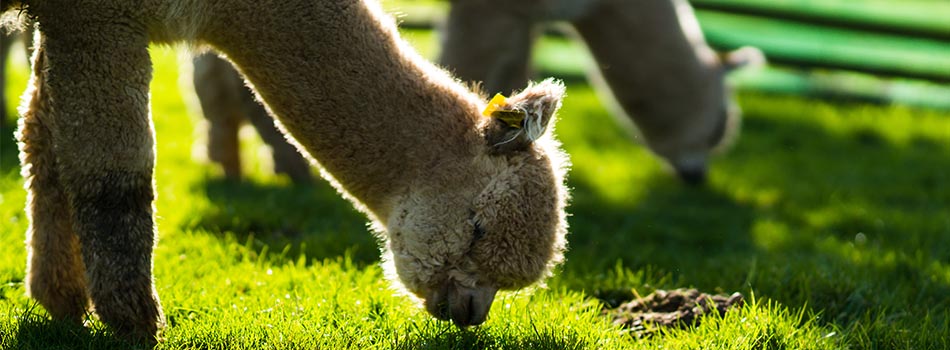
TYPES
There are two types of alpaca: HUACAYA and SURI.
HUACAYA
The Huacaya alpaca has a teddy bear look and a voluminous springy fleece which should be bright, fine, without guard hair and arranged in tight identifiable crimped soft (wavy) locks.
SURI
The Suri alpaca is the rarer and has a fleece that is without crimp, lustrous and hangs in straight twisted lock structure like dreadlocks.
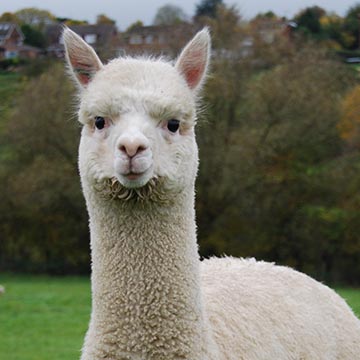 |
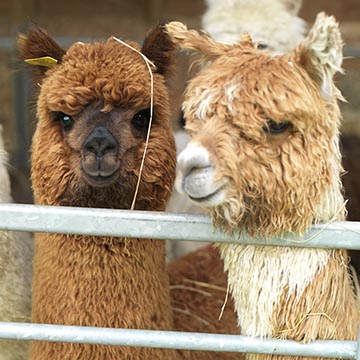 |
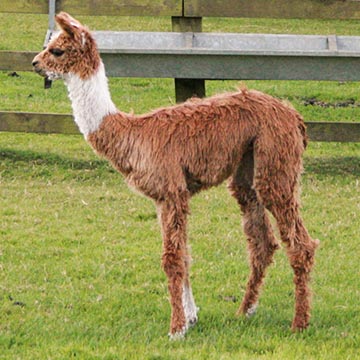 |
HUACAYA ALPACA
The teddy bear |
SPOT THE DIFFERENCE
Can you tell which is Suri and which is Huacaya? |
SURI ALPACA
The rare one |
ORIGINS
The alpaca originates from the South America, where it has been bred for its fleece for over 6,000 years. In the mists of time it was originally domesticated, as was the llama, from the wild species of the Vicuna and the Guanaco.
At the height of the Inca Empire both Suri and Huacaya alpacas were being selectively bred in large numbers to provide a very luxurious fibre, which in turn was processed into fine garments to be worn exclusively by Inca nobility. In a society without money, textiles were used as currency and to breed excellence for the ruling nobility was possibly one of the main ways to gain grace and favour. These breeding programs were totally destroyed at the time of the Spanish Conquest of South America. The colonists slaughtered the alpacas and llamas for food, introduced horses, replaced the alpaca herds with sheep and cattle and displaced the indigenous human population. The result of this bloody and apocalyptic process was that the alpaca was displaced to the high alti-plano above 4,000 metres and beyond, and the sophisticated husbandry and breeding programs disappeared into the mists of time along with many other facets of Inca culture. Since that time, until quite recently the animals were bred for expediency rather than quality and the genetics of alpaca and llama became intermixed, producing animals of lesser quality that carried the traits for all the camelid species. However, the animals survived, adapted and continue to provide sustenance, warmth, fuel and a surplus of fibre which could be turned into textiles.
The breeding programs of the indigenous peoples were until the last century based purely on quantity of fibre produced. In the 1940s, realising that they had a large resource sitting somewhat underused, some South American breeders began to instigate more sophisticated breeding programs to separate llama from alpaca and start improving the quality of their herds. This is an ongoing situation that is a mammoth task on the high alti-plano, where conditions are primitive and grazing, as we recognise it, is at a premium. Despite these obstacles over the last 50 years a thriving and sophisticated alpaca industry has emerged in Peru, based in Arequipa, to service the increasing world demand for alpaca fibre and product. The large processors are very active in encouraging the development of one of South America's important natural resources and great strides have been made in fibre processing and manufacturing for a demanding world market.
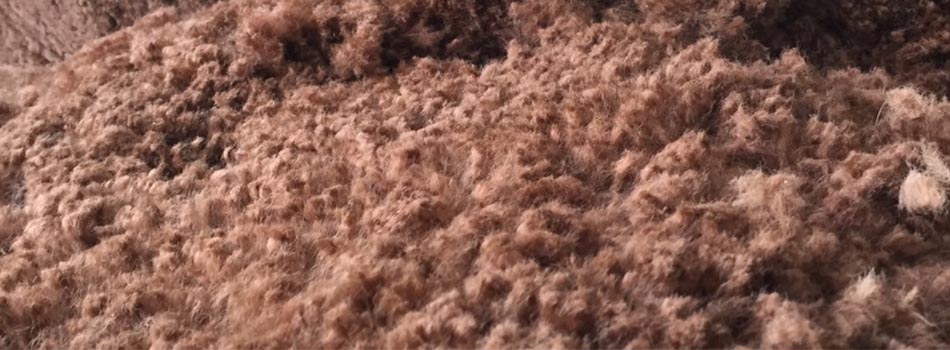
CONTINUE TO ALPACA HISTORY: PRESENT.